What if you could anticipate when demand will peak, who is most likely to convert, or where a disruption in your supply chain may strike before it occurs?
This isn’t science fiction. It’s the business of predictive analytics and it’s fast becoming a strategic priority in every major sector.
Predictive analytics is a crystal ball for contemporary business; leveraging data, statistical algorithms, and artificial intelligence to look into the future. Across industries, firms are tapping into this capability to forecast customer actions, streamline operations, and manage risks.
In this detailed overview, we examine predictive analytics use cases for business sectors such as eCommerce, travel, logistics, fintech, quick commerce, and healthcare. By way of real-world predictive analytics examples, we’ll observe how core business functions; from marketing and supply chain management to fraud detection and customer service are being revolutionized. The outcome is not magic, but quantifiable ROI and efficiency improvements that convert hindsight to foresight for business decision-makers.
What is Predictive Analytics and How does it Work?
Predictive analytics is the process of applying historical data, statistical algorithms, and Machine Learning in Predictive Analytics to predict future results. Essentially, it’s all about recognizing patterns in past behavior to make more intelligent, data-driven predictions. Whether it’s anticipating customer churn, detecting fraud, or managing inventory, predictive analytics enables companies to move from reactive decision-making to proactive approaches. You can explore this further in our Predictive Analytics Guide.
So, how exactly does it work?
It begins with a business goal such as, “Which customers will renew their subscription in the coming quarter?” Data preparation and collection follow, taking pertinent past data, cleaning it up for analysis, and then preparing to input it into predictive analytics models. The analysts construct predictive analytics models based on methods such as decision trees, linear regression, or neural networks.
How Predictive Analytics Works Behind the Scenes of Smart Decisions
Go beyond the buzzword and see how data turns into foresight, and foresight into competitive advantage.
They train these models on historical data to identify patterns and validate them for accuracy before deploying them in real-time business operations.
You encounter predictive analytics every day, when Netflix recommends a show, your credit card flags a suspicious purchase, or a retailer suggests what you’ll likely buy next. These are just a few predictive analytics use cases for businesses.
There are also extensive predictive analytics use cases in sectors such as healthcare, finance, and marketing. In small startups and big companies alike, AI predictive analytics examples abound streamlining operations, improving customer experience, and increasing profitability.
With affordable tools and commodity computing capacity, the threshold to entry has never been lower. Without having to be an expert statistician, companies can begin to utilize predictive analytics applications today to uncover hidden value and make better decisions tomorrow.
Building a Predictive Analytics Strategy for Non-Tech Teams
Learn how business teams can confidently use data insights to drive smarter decisions without needing a technical background.
By now, we’ve briefly discussed what predictive analytics is and how it works.
Next, let’s look at examples of predictive analytics use cases in the real world.
What are Industries leveraging Predictive Analytics for?
eCommerce- Personalizing Shopping and Forecasting Demand
In eCommerce, predictive analytics is a virtual clairvoyant, it foresees customer behavior by reading between clicks, scrolls, and shopping cart patterns before it occurs. Yet, this is not guessing. It’s data-driven insight that changes the way brands market, price, stock, and serve.
Online consumers today demand personalization at every touchpoint. With predictive models, companies can move beyond mass product pushes to build customized experiences that are seamless and intuitive yet optimize backend processes for velocity and profitability.
Where Predictive Analytics Delivers Real Value in eCommerce:
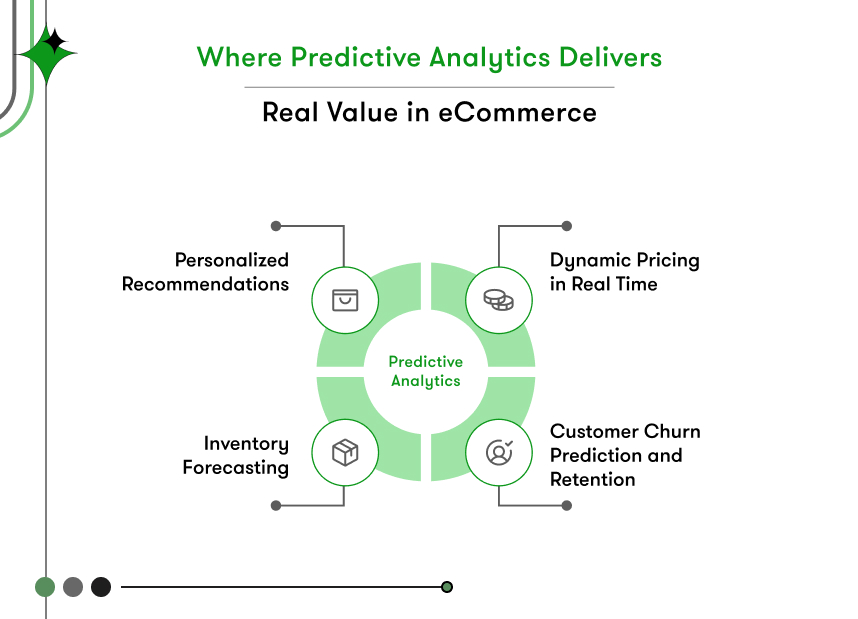
Personalized Recommendations
Consider Netflix for shopping algorithms that study browsing and purchasing behavior to recommend precisely what the user desires next. This predictive analytics model is trained on millions of shoppers, presenting each customer with the products they’re most likely to put on their cart. The reward is massive, a McKinsey study indicated that personalization at scale can boost sales by 1–2% in grocery and even higher in other retail categories. (McKinsey)
The ROI? Larger basket sizes and improved customer retention.
Dynamic Pricing in Real Time
Prices fluctuate according to supply, demand, competitor behavior, and even the time of day. Predictive models enable retailers to extract more value by dynamically adjusting prices automatically without losing price-sensitive customers.
Inventory Forecasting
Storing the correct merchandise in the correct locations is a balancing act. Predictive analytics assists in finding the balance to minimize overstock that holds money and out-of-stock situations that annoy loyal customers. By analyzing sales data, weather patterns, and local events, Walmart accurately forecasts product demand and optimizes stock levels. This approach has led to a 30% reduction in stockouts and a 20% decrease in excess inventory, resulting in significant storage cost savings and enhanced customer satisfaction. (Source)
Customer Churn Prediction and Retention
Silent customer loss is expensive. Predictive models identify when usage is waning, triggering reactivation incentives or targeted outreach that can restore users before they exit forever.
They’re not just process victories, they’re strategic wins. When done properly, predictive analytics converts data to action, and action to revenue.
Businesses that are using predictive analytics in eCommerce observe quantifiable increases in conversion, campaign performance, and customer lifetime value frequently in a matter of a few months.
Travel & Hospitality- Forecasting Demand and Enhancing Experiences
In travel, timing is not just everything, it’s crucial. One delay can cascade across flights, hotel arrivals, and customer satisfaction. That’s why predictive analytics has emerged as a reliable co-pilot for airlines, hotels, and booking sites.
Using historical booking patterns, real-time demand, weather, and even social conversation, companies can forecast customer behavior, price more strategically, and offer personalized experiences that make every journey smoother.
These are Predictive Analytics use cases in Travel:

Revenue Management Optimization
Predictive models assist you in predicting demand for flights, accommodations, and packages. By being aware of the trends in booking and seasonal differences, you can then change prices dynamically and optimize revenue without driving away clients. It is like having an intelligent pricing expert that prevents us from leaving profits on the table during peak and off-peak seasons.
Proactive Maintenance & Flight Delay Prediction
Airlines such as Japan Airlines employ predictive models to forecast imminent mechanical problems prior to their causing delays. This has enabled them to edge towards an ambitious target, ‘zero unscheduled mechanical disruptions.’ Similarly, airlines use flight data to anticipate and avoid delays, from crew scheduling errors to probable weather delays. Predictive analytics helps gate and crew assignment at airports by forecasting arrivals and passenger loads, smoothing the travel experience on the ground.
Hyper-Personalized Marketing & Itinerary Generation
With predictive analytics, you can personalize travel experiences for every customer by examining booking behavior, preferences, and even weather patterns. This enables you to suggest personalized itineraries that feel like they have been handpicked, driving satisfaction, loyalty, and conversions and saving agents’ time spent planning trips manually. Sites such as Expedia and Airbnb suggest destinations, places to stay, and activities based on surfing history, previous bookings, and traveler profiles, evoking the “this was made for me” experience.
Enhanced Customer Experience Through Anticipation
Predictive technology warns staff when a guest is about to require support; e.g., rebooking because of a missed connection, prior to their asking. It transforms travel brands from reactive service providers into considerate hosts.
The result? Less guesswork, more personalization, and a level of operational smoothness that builds loyalty trip after trip. As one travel analytics expert described it, this technology opens a “realm of possibilities” for airlines, hotels, and agencies to better serve us. Airbnb notoriously attained a significant five-year growth rate, from niche site to dominant global giant. (Business of Apps Data) When you do it properly, you hardly realize it; you simply arrive where you’re going, when you want to, at a price that suits you, with a grin on your face.
Facing Predictive Analytics Challenges? Here’s What’s Holding Teams Back
Discover the real reasons predictive initiatives fail and what successful companies do differently to turn data into results.
Logistics & Supply Chain- Streamlining Operations and Reducing Costs
Supply chains are living systems interacting with each other; complicated, dynamic, and vulnerable to disruption. Predictive analytics is a logistics GPS, navigating companies through uncertain terrain with data-enabled vision.
Upon demand forecasting to fleet service, companies are using predictive models to save costs, prevent delays, and become resilient in the presence of uncertainty.
What are Predictive Analytics use cases in Logistics and Supply Chain?
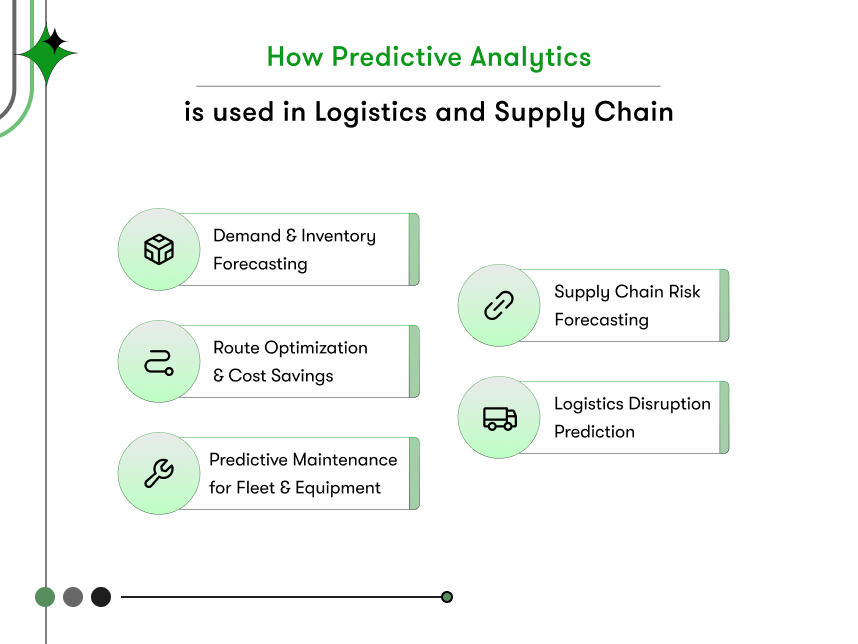
Demand & Inventory Forecasting
Forecast models predict product demand at granular levels such as city, region, even store. This allows companies to avert expensive overstocking or stockouts of critical items. Some companies claim 20–50% cost savings on inventory holding.
Route Optimization & Cost Savings
UPS’s ORION (On-Road Integrated Optimization and Navigation) system is a route-optimization platform that uses AI in Predictive Analytics to determine the most efficient delivery routes for its vast fleet. It factors in traffic, delivery stops, and fuel efficiency to plan the best routes. The result? 100 million fewer miles driven annually, saving $300–$400 million each year.
Supply Chain Risk Forecasting
Weather, geopolitical tensions, port congestion, predictive analytics takes into consideration thousands of variables in order to predict supply chain hiccups before they occur. Businesses can then divert shipments or stock key materials ahead of time. Surveys show this is becoming standard: 77% of shippers and 80% of third-party logistics providers (3PLs) are investing in predictive analytics and related IoT (Internet of Things) data tools to gain this kind of foresight.

Predictive Maintenance for Fleet & Equipment
From trucks to conveyor belts to ships, predictive software tracks the health of machines and predicts failures before they break down. This cuts unplanned downtime by as much as 80%.
Logistics Disruption Prediction
From union strikes to unexpected storms, unforeseen disruptions are ever-present. Predictive models simulate scenarios, allowing you to plan ahead with contingency plans. You can divert routes, prestock inventory, or change Predictive Analytics in Delivery commitments assuring smoother operations even when the world throws a curveball.
In the logistics sector, predictive analytics basically provides managers with a radar for future obstacles and opportunities. It transmutes the uncertainty of global supply chains into something manageable and visible on the horizon. For example, a big retailer such as Walmart uses predictive models to match inventory availability with local consumer buying patterns, resulting in significant cost efficiency benefits.
The bottom line is that from warehouse to destination, predictive analytics is making goods move smarter, faster, and cheaper.
Fintech & Banking- Managing Risk and Combating Fraud
In finance, milliseconds count. A slow fraud signal or lost lending opportunity can cost millions. Predictive Analytics in Fintech enables banks, insurers, and fintech companies to make better decisions, in a hurry balancing risk and opportunity.
Used for fraud detection to predict default risks, these models are now a standard element of contemporary financial strategy.
Top Predictive Analytics Use Cases in Finance:
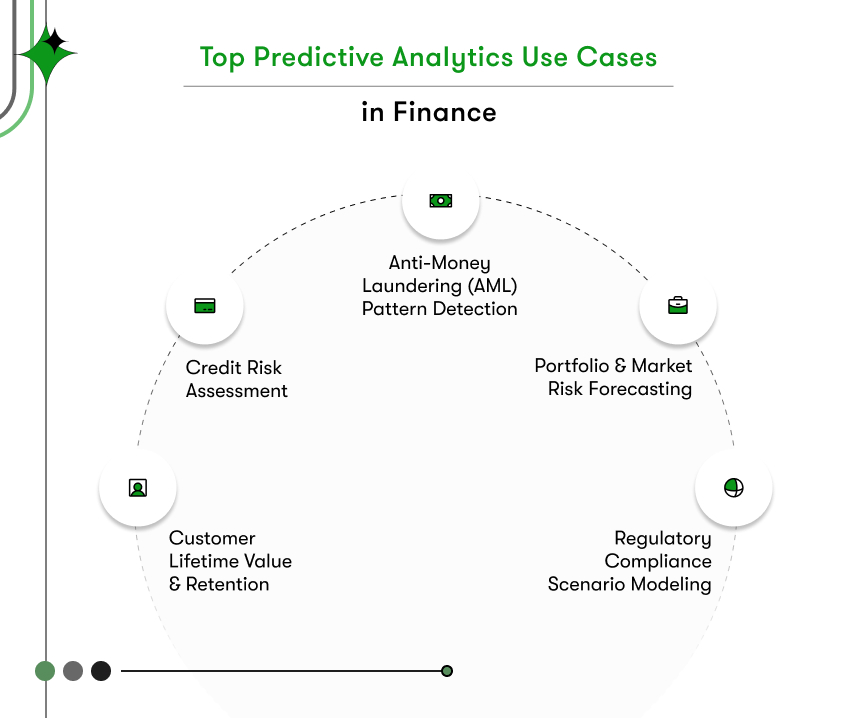
Anti-Money Laundering (AML) Pattern Detection
Capturing money laundering is intricate, but predictive analytics makes it intelligent. Through real-time analysis of user behavior and transaction patterns, we are able to identify anomalies and flag suspicious behavior early on so that we can remain compliant and protect our platform from fraud and reputational damage.
Credit Risk Assessment
Beyond FICO scores, predictive models assess a wider range of data such as expenditure behavior, market trends, even mobile usage; to determine creditworthiness. Case studies confirm this, one global bank that overhauled its retail credit risk models using predictive analytics was able to boost loan approval rates by 15% and cut default rates by 25%, by flagging creditworthy applicants that previous models overlooked and high-risk applicants that previous models would have accepted.
Customer Lifetime Value & Retention
Predictive analytics enables customer segmentation by future value, rather than past behavior. It also flags early indicators of churn so proactive offers or service adjustments can stop it.
Portfolio & Market Risk Forecasting
Predictive modeling is employed by investment companies to model how portfolios could behave under varying market conditions. This enables pre-emptive rebalancing and more informed investment risk-taking.
Regulatory Compliance Scenario Modeling
Regulations are in a constant state of flux, and non-compliance is costly. Predictive analytics lets us simulate different regulatory changes and predict their effect on business operations. This enables us to make proactive adjustments to systems and processes, minimizing the risk of fines or audits while keeping business operations smooth.
Overall, the banking and fintech industry is experiencing some of the strongest returns on investment from predictive analytics. These bottom-line effects directly account for why banks are among the biggest spenders on AI. What’s exciting is how AI predictive analytics use cases in finance also enhance customer experiences. Reduced fraud translates into customers trusting the system more and not having to worry about disputes.
Quick Commerce- Faster Routes and Happier Customers
The final mile is where brands are made or broken. It’s a parcel, a meal, or medicine to customers; all of which require accurate, timely, and on-time delivery. Predictive analytics makes it possible even in situations where the environment is ever-changing.
From optimizing routes to spikes in demand, delivery businesses are leveraging AI models to not only deliver parcels, but also outstanding customer experiences.
What are Predictive Analytics use cases in Quick Commerce?
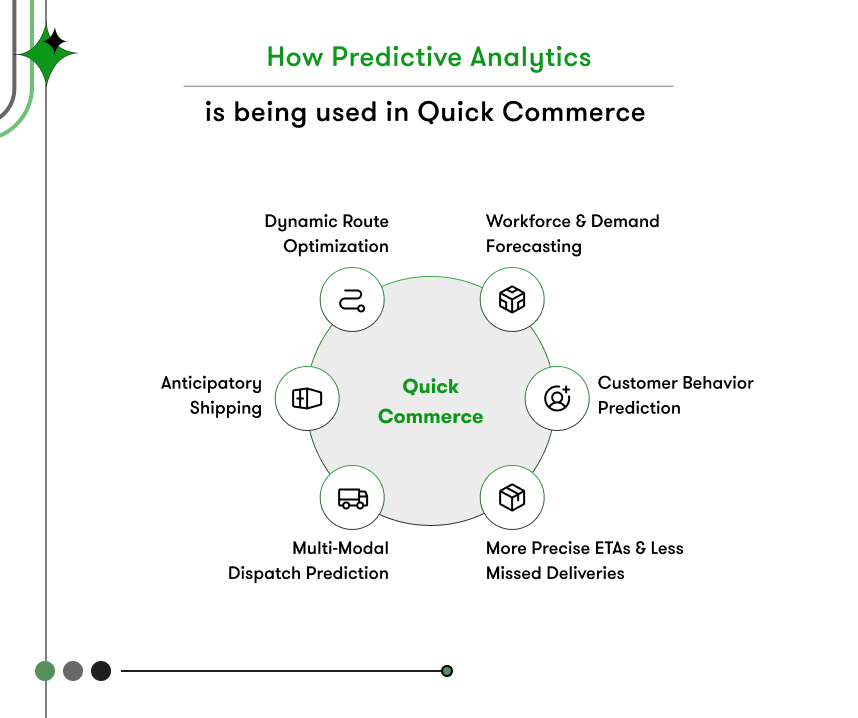
Dynamic Route Optimization
Route re-routing in real time according to weather, traffic, and density of deliveries reduce fuel and time. UPS claims to save 10 million gallons of fuel every year this way.
Anticipatory Shipping
Amazon’s system anticipates what customers will buy and pre-positions those items in local warehouses to facilitate same-day or even two-hour delivery.
Multi-Modal Dispatch Prediction
Your transport network relies on making the right mode of transport choice. Predictive models guide you on whether to send a bike, car, or drone depending on live traffic, package weight, or weather conditions. This reduces delivery times, saves costs, and enhances customer satisfaction without relying on guesswork.
Workforce & Demand Forecasting
Platforms such as Uber Eats or DoorDash utilize predictive models to send drivers to where demand will be before it actually occurs. This enhances delivery times and lowers driver downtime.
Customer Behavior Prediction (Reorder Likelihood)
Not all customers are equally probable to reorder. Through predictive analytics, you can examine past actions to discover probable reorders. This assists you in targeting advertising efforts, prioritizing re-engagement campaigns, and providing targeted incentives ultimately driving retention and repeat sales without squandering resources.
More Precise ETAs & Less Missed Deliveries
Predictive models guarantee customers receive consistent time windows and even notifications if there is likely to be a delay. This minimizes unsuccessful delivery attempts and maintains customer satisfaction high.
Ultimately, predictive analytics is the behind-the-scenes power enabling the modern convenience economy. It ensures your delivery happens quicker and more reliably, usually before you even considered tracking it. For companies, this means more deliveries being processed with the same resources and increased customer loyalty from reliable service.
Predictive Analytics vs Traditional Analytics: What Sets Them Apart
Uncover how modern predictive models outperform traditional methods and why the future of decision-making depends on proactive insights.
Healthcare- Improving Operational Efficiency
In healthcare, the most is at stake and predictive analytics has its most profound potential. With proper data, providers are able to detect risks in early stages, customize care, and enhance patient outcomes in ways they couldn’t earlier.
From cutting readmissions to getting ready for a flu outbreak, predictive technology is becoming key to clinical as well as operational excellence.
Key Predictive Analytics Use Cases in Healthcare:
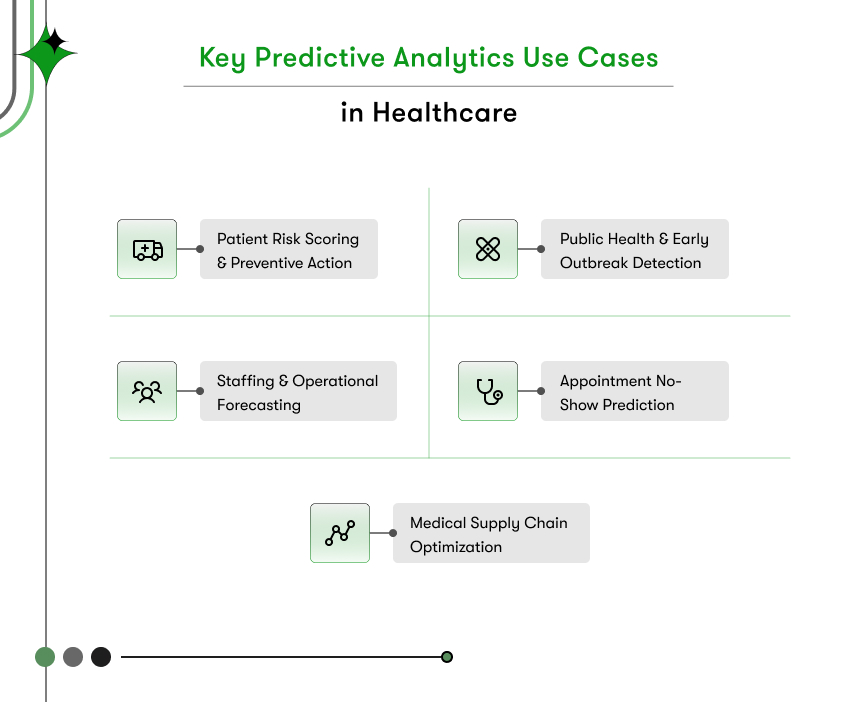
Patient Risk Scoring & Preventive Action
Hospitals recognize which patients are most likely to be readmitted or complicated. At Corewell Health, predictive intervention prevented 200 readmissions, saving $5 million in expenses. (Spectrum Health)
Staffing & Operational Forecasting
Emergency rooms rely on predictive modeling to forecast patient numbers in anticipation of weather, events, and past trends in order to ensure the proper staffing is in place when demand surges.
Medical Supply Chain Optimization
Forecasting toolkits assist in ensuring PPE, vaccines, or medications are in stock based on anticipated demand minimizing shortages and waste. It also helps you forecast bed availability by analyzing admission trends, discharge rates, and seasonal illnesses. With better visibility, you can allocate space and staff more effectively, improving patient care and avoiding overcrowding.
Public Health & Early Outbreak Detection
Throughout the COVID-19 pandemic, predictive dashboards assisted health systems in prebooking ICU beds and ventilators before surges. In the future, the same models may predict everything from RSV to mental health emergencies.
Appointment No-Show Prediction
No-shows interfere with schedules and cost resources. Predictive models allow you to flag patients who are likely to no-show based on historical behavior, appointment type, and other factors. You can then remind them, double-book strategically, or reschedule while keeping operations going predictive analytics trends and minimizing lost revenue.
Perhaps the most inspiring aspect of predictive analytics in healthcare is how it directly affects human lives for the better. It’s not simply dollars saved, although those are crucial to a sustainable system; it’s grandma not having to return to the hospital because her care team foresaw what she’d require at home, or a patient not experiencing a health crisis because data indicated it and allowed for an early intervention. It enables healthcare professionals to shift from being simple reactants to illness to being proactive partners in health.
Final Thoughts
In summary, predictive analytics is sparking a change in paradigm in all industries. It’s making data a strategic resource, one that not just forecasts future outcomes but prescribes improved actions in the present. The predictive analytics use cases in business we’ve explored; from retail personalization and travel pricing to supply chain optimization, fraud prevention, precision delivery, and patient care, all underline a common theme, knowledge is power, especially when it’s ahead of time. Predictive Analytics Consulting helps businesses unlock real, measurable returns from these initiatives, including higher revenue, reduced costs, and improved customer satisfaction.
For businesses seeking to establish or enhance their predictive analytics initiative, Kody Technolab Ltd is a trustworthy and forward-thinking partner. Kody offers a strong combination of domain knowledge and technical expertise. Their data scientists, AI engineers, and business analysts have first-hand experience with a vast range of predictive modeling methods, from machine learning algorithms and time series analysis to deep learning frameworks. With a focus on maximizing the ROI of Predictive Analytics, the firm leverages tools such as Python, R, TensorFlow, and Power BI to create scalable, reliable models that deliver actionable insights. This capability enables them to design custom forecast models aligned with a company’s specific goals, such as predicting sales, improving customer loyalty, or optimizing supply chain efficiency.

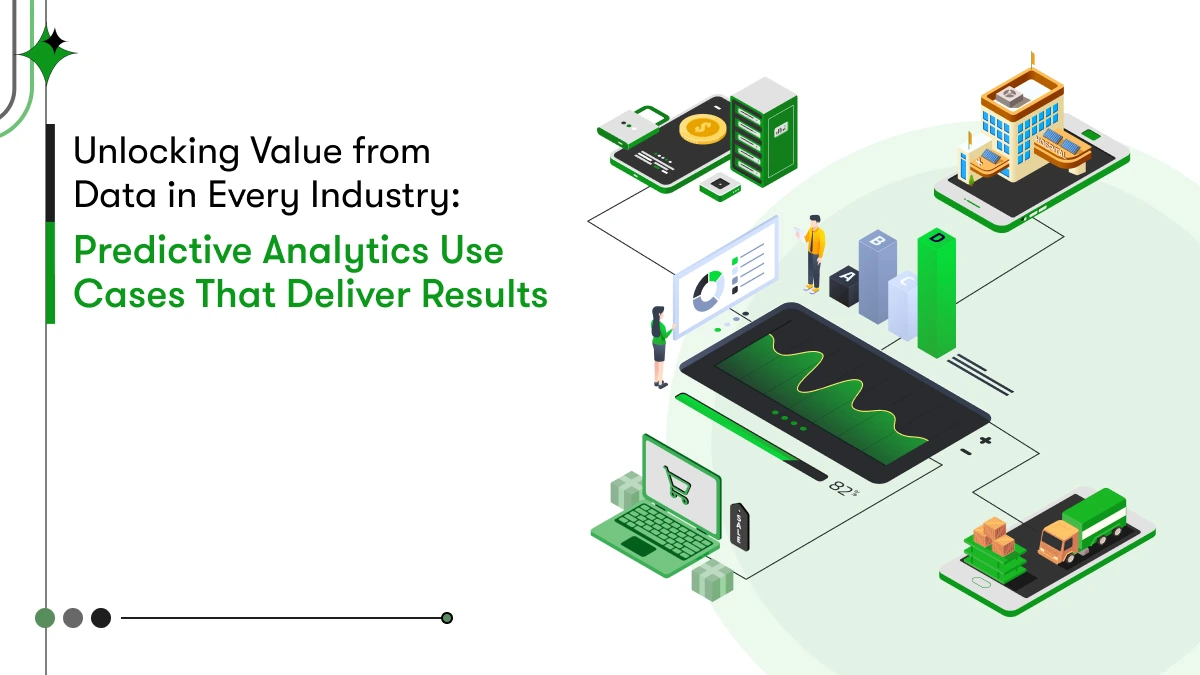
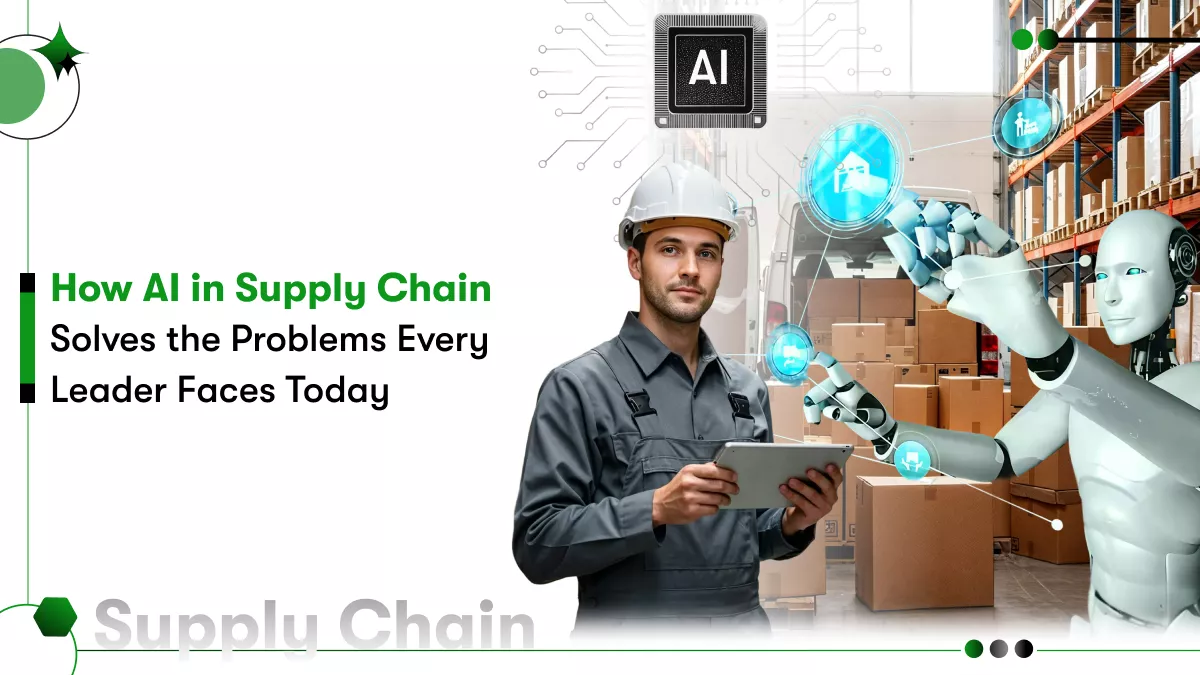
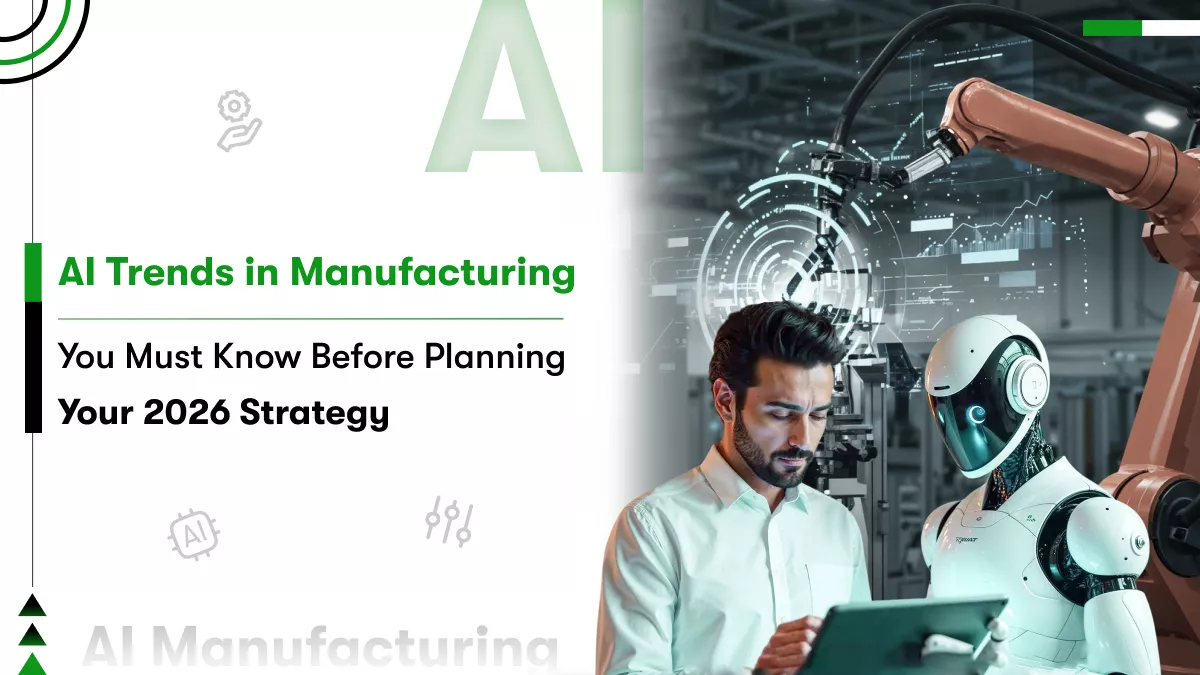
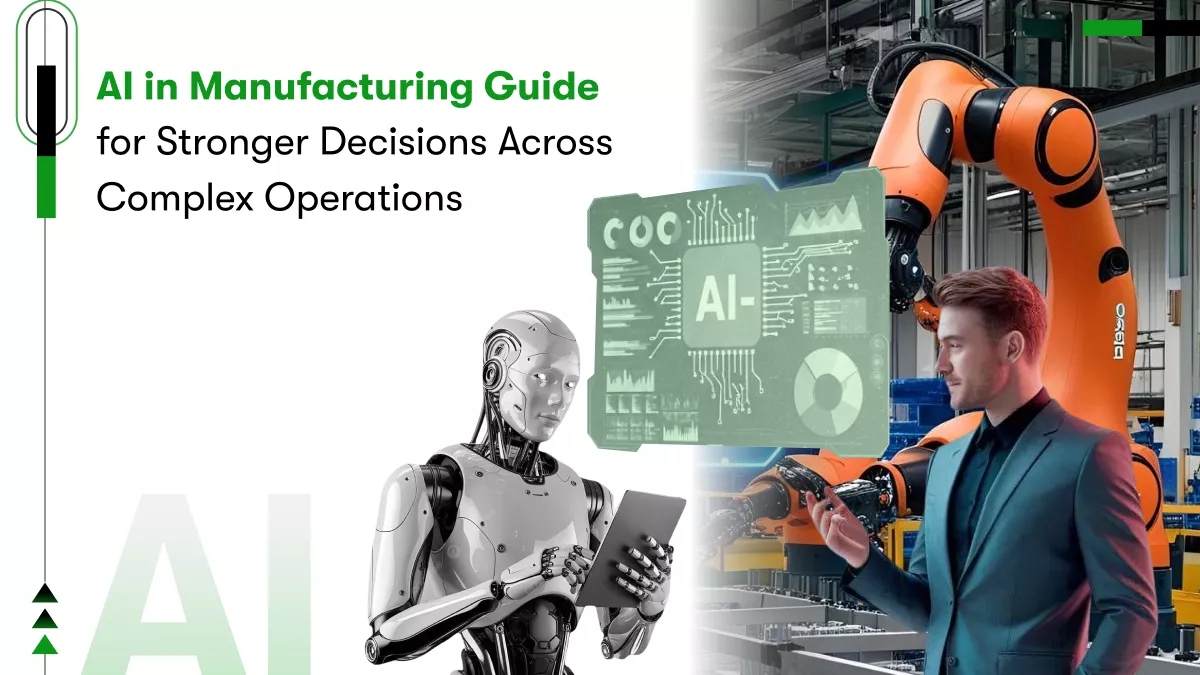
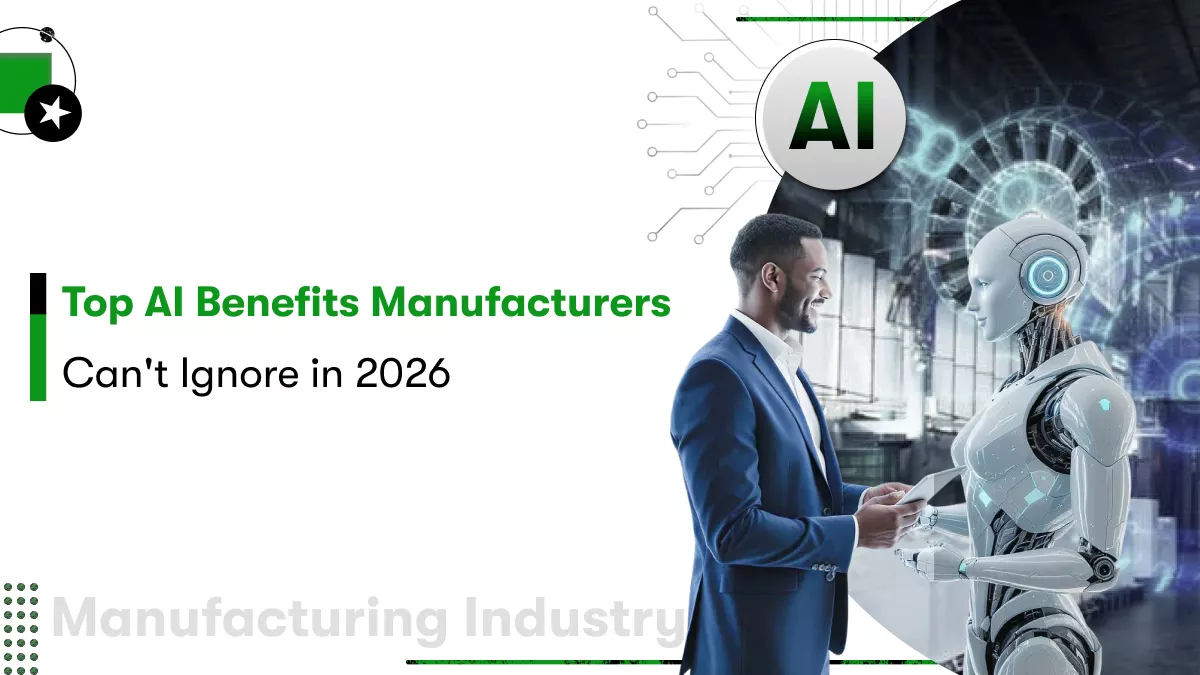







 Contact Information
Contact Information